#celtic pagan
Text
The Structure of a Pagan Prayer
When appealing to a deity or making an offering, it’s wise to know how this was traditionally done in the past so you can be as respectful as possible and build a true reciprocity with the gods. This type of prayer structure is found in all manner of pagan religions from Norse paganism, Hellenic (Greek) polytheism, Kemetic (Egyptian) prayer and so on. I got the inspiration and much of the information here from @Ocean Keltoi on Youtube who is a fantastic scholar and Norse heathen who actively stands against prejudice and is all around a wonderful resource.

Now, there are three main elements of a pagan prayer, which should be done in this order:
1. The Invocation. This is where you call upon the specific god you’re hoping to connect with. Think of it as writing the name and address on your letter to the Gods - it lets the deity know that this prayer is directed at them, which is important in a polytheistic religion with many gods. To start your invocation, address the deity directly by name, or use an epithet or kenning that they're known by. It's especially wise to choose an epithet that relates to what you're praying for, like using one of Apollo's healer epithets while addressing him in a prayer about a loved one's sickness, for instance. It’s also a good idea to praise them highly and with a certain air of reverence. These are ancient deities after all.
2. The Argument. Here you give your reasons for why a deity should fulfill your request and favor you. If you’ve brought offerings, cite them here. You can also include reasons for why you’re reaching out, such as love in a prayer for Aphrodite or matters of justice with the god Tyr. This is where you make your case to them. And if you’re reaching out to a deity you don’t have a working relationship with, which let’s be honest will be the case many more times than we’d like, then you can tell them this here also. A good example might be “Oh Tyr, one-handed war god and son of Odin, though we have not met before I have heard your name and been called to it…”
3. The Request. Finally you ask the gods to look kindly on your request and to grant you their blessing. Again, be as respectful and reverent as possible towards them.
Prayer Example: “Grey-eyed Athena, daughter of thundering Zeus, if ever I have poured out sweet wine for you, look kindly on me and grant me your wisdom.”

How to stand when making the prayer
This depends on which God you’re reaching out to and, of course, your own personal comfort. The most common ways of praying are to stand and perform some gesture of reverence, kneel while praying and even prostrate, kneeling fully on the ground with your head down as you appeal to the gods. Some might also choose to wear veils when performing prayers or rituals for deities, though this is naturally up to the individual.
In Hellenic tradition, if you’re praying to an Ouranic god (deities of the heavens) you would traditionally wear your hair up and stand with your arms raised to the heavens while reciting your prayer. Meanwhile, if you are praying to a Chthonic god (deities of the underworld), you would kneel and face downwards towards the Earth with your hair flowing freely.
Some Norse sources tell of ancient pagans prostrating before the gods, and yet this is still not entirely necessary. Pray however you see fit and what is most comfortable for you at the moment.
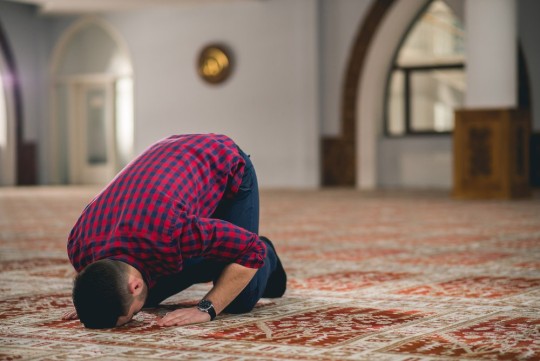
^ This is what prostrating looks like
Sources:
Ocean Keltoi's video on pagan prayers
Hearth and Fire Work's blog post on Hellenic prayer structure
#witchblr#witchcraft#witch tips#deity work#paganism#pagan#polytheism#hellenic pagan#hellenic paganism#hellenic polytheism#norse pagan#norse heathen#norse paganism#heathenry#kemetic paganism#kemetic pagan#celtic pagan#celtic paganism#spirit work
873 notes
·
View notes
Text
I think one of the hardest lessons I've had to learn as a pagan, is that it's sometimes okay to not do anything.
Constantly dividing my mind between worship, work (gaining income), school, and my social life tore me apart. And I was ashamed to even talk to my deities when months had passed. But they weren't ashamed of me.
Sometimes doing your best is an act of worship. It's not about giving up what you need to survive. You matter. You always have mattered.
#first post in forever lol#paganism#pagan#deity worship#deity#hellenic pagan#norse pagan#celtic pagan#polytheism
381 notes
·
View notes
Text
pro deity worship/low energy tip:
you CAN watch tv with/for your deities! and devote it to Them! and use that devoted time as an offering!
your offerings don’t exclusively HAVE to be physical or even only “things that would have been offered at the inception of the religion”. quality time is an offering. and TV (or movies!) can be quality time. as someone who is autistic/disabled, sometimes that’s all I can give (and I’m biased in that TV is my special interest, lol.)
examples:
for The Morrigan, I watch shows about killers, mediums, ghosts, and powerful groups of women. if I’m watching movies, I lean towards Irish horror movies or movies about spirits. sometimes just general dark fantasy movies. examples include Practical Magic (movie), The Hallow (movie), Hannibal (movie series or show but especially show), Psychic Kids* (reality show)
for Hermes, I watch things that are both funny and interesting/educational/informative. if I’m watching movies, I lean towards comedy romps (especially that involve travel) or biopics. examples include We Are The Millers (movie), Rocketman (biopic movie), Hart to Heart (comedy/interview show), Jeopardy!* (educational game show)
for Hades, I watch any and all horror movies, especially those with an afterlife component. if I’m watching shows, I tend to lean towards dark/kooky spooky cartoons. examples include Beetlejuice (movie or show but especially movie), The Cleansing Hour (movie), The Grim Adventures of Billy and Mandy (cartoon show), Courage the Cowardly Dog* (cartoon show)
for Persephone, I tend to watch anything old, spooky, heartfelt, and aesthetically beautiful. if I’m watching movies, I lean towards dark musical films or romantic movies with a horror twist (bonus points for horror, comedy, and romance all in one). examples include Deathgasm (movie), The Corpse Bride (cartoon musical movie), Elvira’s Movie Macabre (horror movie commentary show), The Munsters* (show)
I put a * next to the programs that I feel They’ve loved the most and have felt truly deep connection with Them over! please feel free to get weird with it, experiment, find what works for your worship. and maybe in the reblogs or tags, tell me what you’ve been watching and who you’ve been watching it with!
#the wolf speaks#paganblr#pagan#paganism#eclectic paganism#helpol#hellenic paganism#hellenic pagan#hellenic polytheism#polytheism#irish paganism#celtic paganism#irish pagan#celtic pagan#the morrigan#hades#persephone#hermes#the morrigan deity#hades deity#persephone deity#hermes deity
234 notes
·
View notes
Text
Current brainworm, none of the Celtic cultures' creation myths have survived, even though they almost certainly had one. The closest we have is the Lebor Gabala Erenn from Irish mythology, but it isn't a creation story, it records the various settlements of Ireland, ending in the Gaels. However, it is thought that there are reflections of an earlier creation myth in the LGE and in the Tain, and there are similar themes that validate that the Gaels at least viewed the creation of the landscape in this way from various other stories. Additionally, we can compare other Indo-European creation myths to figure out what elements the Gaelic creation myth almost certainly would have had. These include:
Before creation, there is a void of some kind
In that void, fire interacts with water/ice to create the first life
A primordial bovine, most likely a cow (bulls were more common in IE cultures that emphasized pastoralism over crops. The Romans had a she-wolf, because they had to be edge lords)
One primordial being or possibly a set of twins who are sustained by the milk of the cow
One of the twins/the primordial being is dismembered to create the physical world
So already we have the makings of a general creation story, and if you're familiar with Norse mythologies, you might recognize it. In fact, it's thought that the Norse creation myth has retained the most elements of the original IE myth
However, scholars point out that the primordial being that is killed is called *Yemo, meaning "twin", which means there was likely originally two first beings. In the one sacrificing the other, the act renders the brother doing the sacrificing as the First Priest, who creates the concept of death, but in doing so turns that death into the living world. The sacrificed brother is then typically rendered as the First King and Ruler of the Land of the Dead. By setting up this order for the world, the First Priest establishes that life cannot exist without death (whether it be harvesting crops or butchering livestock), and typically, these myths continue and establish the role of the priests in society, who's job it is to ensure the continuity of the original sacrifice and maintain the living world
Now, here's where we get into my speculation;
I think it's likely that the Irish creation myth involved a set of twins. Off the top of my head, I think that possible reflections of this can be found in the brothers Amergin and Donn and in the Donn Cuailnge and Finnbhennach from the Táin. With Amergin and Donn, Donn insults the goddess of the land and is drowned. In doing so, Donn becomes a god of the dead and all the souls of the dead have to gather at or pass through Tech Duinn. Amergin however, secures the support of these goddesses and is able to go on and give order to the Gaelic rule of Ireland by deciding who will rule what and serves as the Chief Ollam (bard) of Ireland. In the Táin, after the main Plot has gone down, the Donn Cuailnge and Finnbhennach fight and the the Donn Cuailnge ends up killing Finnbhennach. As the Donn Cuailnge passes through the landscape, pieces of Finnbhennach drop off his horns and form/name part of the landscape. I think it's also interesting how in both these stories, one of the duo is explicitly associated with the color white (Amergin is called "white knees") and the other one is dark, but the opposite one dies first in the stories
Also, if we look at myths like the creation of the Shannon and the Boyne rivers, where in the goddesses Sionnan and Boann, respectively, die in the rivers' creations, we further see that the death of one figure to create an element of the landscape is a relatively common one, so a creation story similar to the one I hypothesize the Irish had wouldn't have been outside of pagan Irish belief
Additionally, if we look at the duíle, kind of like the Irish elements/natural features, we see that the nine elements/features are each explicitly associated with body parts. Stone is associated with bones, the sea with blood, the face with the sun, ect. I think this could be a call back to that earlier creation myth
Off the top of my head, that's what I've been mulling over. Idk, I might be completely off the mark, but if anyone wants give their thoughts, I'd love to hear them. I'm certainly not an expert in Irish mythology and there may be some key factor that completely sinks this idea
#Sword speaks#Irish mythology#Irish pagan#Irish polytheist#Celtic pagan#Celtic polytheist#creation myth#idk man my brain has been like a dog with a bone with this for days and I'm curious what others might think
232 notes
·
View notes
Text
Book Review of 'Celtic Cosmology and The Otherworld: Mystic Origins, Sovereignty and Liminality' by Sharon Paice MacLeod

I found this book to be an excellent addition to my personal reference library. I think the author does an excellent job of displaying the information we do know about how the 'Celts' viewed their origins, liminality and sovereignty in an easily digestible way that could be picked up by someone new to the subject but also presented so much information that those already familiar would almost certainly learn new things as well.
I found that my only true complaint about the book was that the author didn't decide to cover more than three subjects.
#celtic#celtic mythology#celtic cosmology#celtic paganism#celtic polytheism#celtic pagan#pagans#paganism#paganblr#polytheistic#polytheism#book#books#book review#Celtic Cosmology and the Otherworld#Sharon Paice MacLeod
89 notes
·
View notes
Text
UNBLENDING CELTIC POLYTHEISTIC PRACTICES
Celtic Umbrella
This lesson is largely focusing on the insular Celtic nations & Brittany (Ireland/Eire, Scotland/Alba, Wales/Cymru, Cornwall/Kernow, Isle of Man/Mannin, & Brittany/Breizh) - traditionally regarded as 6 out of the 7 Celtic nations. Galicia/Galizia is the 7th, but because of a mix of the below + my own lack of knowledge, I won't be covering them.
The vast swath of Continental Celtic cultures are a different but equally complex topic thanks to extinction, revival, varying archaeological artefacts and the work of modern practioners to piece unknown parts back together.
This will serve as a quick 'n' dirty guide to the insular Celtic nations, Celtic as a label, blood percentages and ancestry, the whats and whys of "Celtic soup", and how to unblend practice.
The insular Celtic groups are split into two language groups: Brythonic languages and Gaelic languages.
Brythonic languages are Cymraeg/Welsh, Kernewek/Cornish, & Breton
Gaelic languages are Gàidhlig/Scottish, Gaeilge/Irish, & Gaelg/Manx.
The language split leads to certain folkloric and religious figures & elements being more common within the language group than without. All of these nations had historic cultural exchange and trade routes via the Celtic sea (and beyond). Despite this, it is still important to respect each as a home to distinct mythologies.
Pros/Cons of a broad Celtic umbrella
Pros
- Used within celtic nations to build solidarity
- Relates to a set of cultures that have historic cultural exchange & broad shared experiences
- A historic group category
- Celtic nations’ culture is often protected under broad legislation that explicitly highlights its ‘Celtic-ness’.
Cons
- Can be used reductively (in academia & layman uses)
- Often gives in to the dual threat of romanticisation/fetishisation & erasure
- Conflates a lot of disparate practices under one banner
- Can lead to centring ‘celtic american’ experiences.
- Celtic as a broad ancestral category (along with associated symbols) has also been co-opted by white supremacist organisations.
In this I’m using ‘Celtic’ as a broad umbrella for the multiple pantheons! This isn’t ideal for specifics, but it is the fastest way to refer to the various pantheons of deities that’ll be referenced within this Q&A (& something that I use as a self identifier alongside Cornish).
What about blood % or ancestry?
A blood percentage or claimed Celtic ancestry is NOT a requirement to be a follower of any of the Celtic pantheons. The assumption that it does or is needed to disclose can feed easily into white supremacist narratives and rhetoric, along side the insidious implications that a white person in the USA with (perceived or real) Celtic ancestry is 'more celtic' than a person of colour living in a Celtic region (along with other romanticised notions of homogenously white cultures).
Along side this, a blood percentage or distant ancestry does not impart the culture and values of the Celtic region or it's recorded pagan practices by itself. Folk traditions are often passed down within families, but blood percentage is not a primary factor within this.
Connecting with ancestry is fine, good, and can be a fulfilling experience. It stops being beneficial when it leads to speaking over people with lived experiences & centres the USA-based published and authors - which can lead to blending/souping for reasons further on.
What is 'soup'?
Celtic soup is a semi-playful term coined by several polytheists (primarily aigeannagusacair on wordpress) to describe the phenomenon of conflating & combining all the separate pantheons and practices from the (mainly) insular Celtic nations into one singular practice - removing a lot of the regionalised folklore, associated mythos, & varying nuances of the nations that make up the soup.
Why does it happen?
The quick version of this is book trends and publishing meeting romanticisation and exotification of Celtic cultures (especially when mixed with pre-lapsarian views of the Nations). It's miles easier to sell a very generally titled book with a lot of Ireland and a little of everywhere else than it is to write, source and publish a separate book on each.
This is where centering American publishers and authors becomes an issue - the popular trend of USA-based pagan publications to conflate all celtic nations makes it hard to find information on, for example, Mannin practices because of the USA’s tendency to dominate media. Think of Llewellyn’s “Celtic Wisdom” series of books.
It has also been furthered by 'quick research guides'/TL;DR style posts based on the above (which have gained particular momentum on tumblr).
The things that have hindered the process in unblending/"de souping" is the difficulty in preserving independently published pamphlets/books from various nations (often more regionalised and immediately local than large, sweeping books generalising multiple practices) along with the difficulty of accessing historic resources via academic gatekeeping.
All of this has lead to a lack of awareness of the fact there is no, one, singular Celtic religion, practice or pantheon.
Why should I de-soup or unblend my practice?
Respecting the deities
It is, by and large, considered the bare minimum to understand and research a deity's origin and roots. The conflation of all insular Celtic deities under one singular unified pantheon can divorce them from their original cultures and contexts - the direct opposite to understanding and researching.
Folklore and myth surrounding various Celtic deities can be highly regionalised both in grounded reality and geomythically - these aren't interchangeable locations and are often highly symbolic within each nation.
Brú na Bóinne, an ancient burial mound in Ireland, as an entrance to the otherworld of the Tuatha Dé Danann.
Carn Kenidjack & the Gump as a central site of Cornish folk entities feasts and parties, including Christianised elements of Bucca’s mythology.
The Mabinogion includes specific locations in Wales as well as broad Kingdoms - it’s implied that Annwn is somewhere within the historic kingdom of Dyfed, & two otherworldly feasts take place in Harlech & Ynys Gwales.
Conflating all celtic pantheons under one banner often leads to the prioritisation of the Irish pantheon, meaning all of the less ‘popular’ or recorded deities are sidelined and often left unresearched (which can lead to sources & resources falling into obscurity and becoming difficult to access).
Respecting the deities
Deities, spirits, entities, myth & folklore are often culturally significant both historically and to modern day people (just average folks along with practitoners/pagans/polytheists and organisations) located in the various Nations
A primary example is the initiatory Bardic orders of Wales and Cornwall.
Desouping/Unblending makes folklorist's lives easier as well as casual research less difficult to parse. The general books are a helpful jumping off point but when they constitute the bulk of writing on various Celtic polytheisms, they become a hinderance and a harm in the research process.
A lot of mythology outside of deities & polytheisms is also a victim of ‘souping' and is equally as culturally significant - Arthurian mythology is a feature of both Welsh and Cornish culture but is often applied liberally as an English mythology & and English figure.
Celtic nations being blended into one homogenous group is an easy way to erase cultural differences and remove agency from the people living in celtic nations. Cornwall is already considered by a large majority of people to be just an English county, and many areas of Wales are being renamed in English for the ease of English tourists.
How can I de-soup?
Chase down your sources' sources, and look for even more sources
Check your sources critically. Do they conflate all pantheons as one? Do they apply a collective label (the celts/celts/celt/celtic people) to modern day Celtic nations? How far back in history do they claim to reach?
Research the author, are they dubious in more ways than one? Have they written blog articles you can access to understand more of their viewpoints? Where are they located?
Find the people the author cites within their work - it can be time consuming but incredibly rewarding and can also give a good hint at the author's biases and research depth. You may even find useful further reading!
Find primary sources (or as close too), or translations of the originating folklore, e.g The Mabinogion. Going to the source of a pantheon’s mythos and folklore can be helpful in discerning where soup begins in more recent books as well as gaining insight into deities' actions and relationships.
Ask lots of questions
Question every source! Question every person telling you things that don't define what pantheon or region they’re talking about! Write all your questions down and search for answers! Talk to other polytheists that follow specific Celtic pantheons, find where your practices naturally overlap and where they have been forced into one practice by authors!
Be honest with yourself
There’s no foul in spreading your worship over several pantheons that fall under the celtic umbrella! A lot of polytheists worship multiple pantheons! But be aware of the potential for soup, and make sure you’re not exclusively reading and working from/with sources that conflate all practices as one.
If you approach any Celtic polytheistic path with the attitude of blood percentage or 'ancestral right', stop and think critically about why you want to follow a Celtic polytheistic path. Is it because it's the most obviously 'open' path to follow? Is it a desire to experience what other folks experience? Being critical, turning inward, and really looking at yourself is important.
Originally posted in the Raven's Keep discord server
#celtic polytheism#celtic paganism#celtic soup#celtic#celtic reconstructionism#celtic revivalism#celtic polytheist#celtic pagan#celtic religion
432 notes
·
View notes
Text
The Evil Eye in Irish Folklore
In pre-modern Ireland, like in many other cultures, the power of the gaze held immense significance. Practices and customs associated with the evil eye were passed down through generations, and many were collected in The School's Collection in the 1930s.
The School's Collection has proven to be an indispensable asset in my exploration of Irish paganism. However, it can be quite a task to read, classify, and integrate all the materials on any given topic. The following are my notes from what I've encountered searching the records, but I hope they'll prove useful to others.
What is the evil eye in the Irish folk tradition?
In Irish folk traditions, the evil eye was believed to possess an otherworldly power, capable of causing illness, misfortune, and even death.
It was believed that those who possessed the evil eye could knowingly or unknowingly project this baneful magic onto others simply through their gaze. The evil eye could affect many aspects of life including people, livestock, and crops.
This ability is often referred to as "overlooking" or "blinking" in the Duchas records and the terms can be used interchangeably.
In this locality, long ago, it was a common belief, that if people met with any reverses, or suffered any loss of property, the misfortune was due to "the evil-eye," meaning that some person supposed to have an evil eye "overlooked" their property, and that was considered the reason for the particular piece of ill-luck. If a person with an "evil-eye" took particular notice of any animal, for example, the animal would either do himself an injury or pine away gradually. Usually, the possessors of the "evil eye" were not aware that they had such a particular kind of eye, or were connected with other people's misfortunes. Duchas.ie
What causes the evil eye?
There are numerous things that could cause someone to be born with the evil eye (people are generally considered to be born with it rather than acquiring it later in life). Some of the reasons recorded are:
Having the surname Marrinan 1, 2, 3 or Kingfisher 4.
Being born on Whit Sunday (the seventh Sunday after Easter) 5, 6 or on June 29th 7
Babies returning to breastfeeding after being weaned 8, 9
Babies seeing their baptismal towel before it was washed 10
Your Godparents omitting a word during your baptism 11
Prevention of the evil eye
To protect themselves from the ill effects of being overlooked, people developed customs and rituals, the most popular of which included:
Waiting to light their fires on May Day so that the evil eye did not take their luck and profit for the coming year 12
Placing St. Brigid's crosses around the home (and outhouses) 13, 14
Nailing a donkey's shoe to the threshold of the home (this also helped to guard against the Good Neighbors) 15
For animals, placing a Gauldoron Garragh knot on their back would provide protection 16
Using red items (usually cloth) to distract the evil eye 17, 18, 19, 20, 21
Asking God to bless the person or thing being talked about after you suspect an overlooker (a common term for those who possess the evil eye) has spoken about them 22, 23, 24, 25
Jumping through the flames at midsummer 5
Cures for the evil eye
If all your preventative measures failed, there were several cures that could be tried.
For a baby born on Whit Sunday or another unlucky day, the cure was to place green sod over them three times 4, 6, 8
A cure commonly used with animals thought to have been overlooked was to write the overlooker's name (if known) or the entire alphabet (if the overlooker's name is unknown) onto a piece of paper or other burnable material and burn it under the animal's nose so that it inhales the smoke 26, 27, 28, 29, 30
A piece of thatch from the overlooker's house, or even a piece of their clothing can also be burned under an animal or person's nose (or burned and then the ashes put into a drink) to cure the evil eye 27, 28, 29
Water from a place where three townslands meet can cure when sprinkled on the overlooked animal or person, but the person who gets the water must not speak to anyone on their way there and back 30
Forge water can also be used in the same way 31
While the belief in the evil eye has faded over time, the echoes of these traditions can still be felt in Irish culture today. These records serve as a reminder of the deep-rooted folklore and superstitions that once shaped the lives of the Irish people and can help inform our Irish pagan practices today.
#the evil eye#paganism#irish paganism#irish pagan#irish folklore#celtic pagan#celtic paganism#celtic folklore#folk magic
148 notes
·
View notes
Text
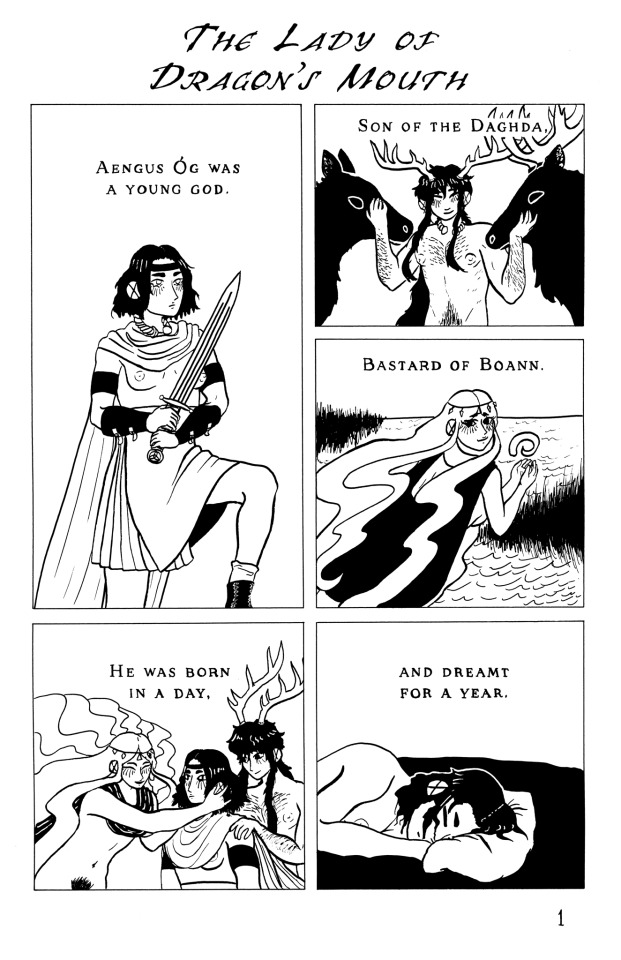
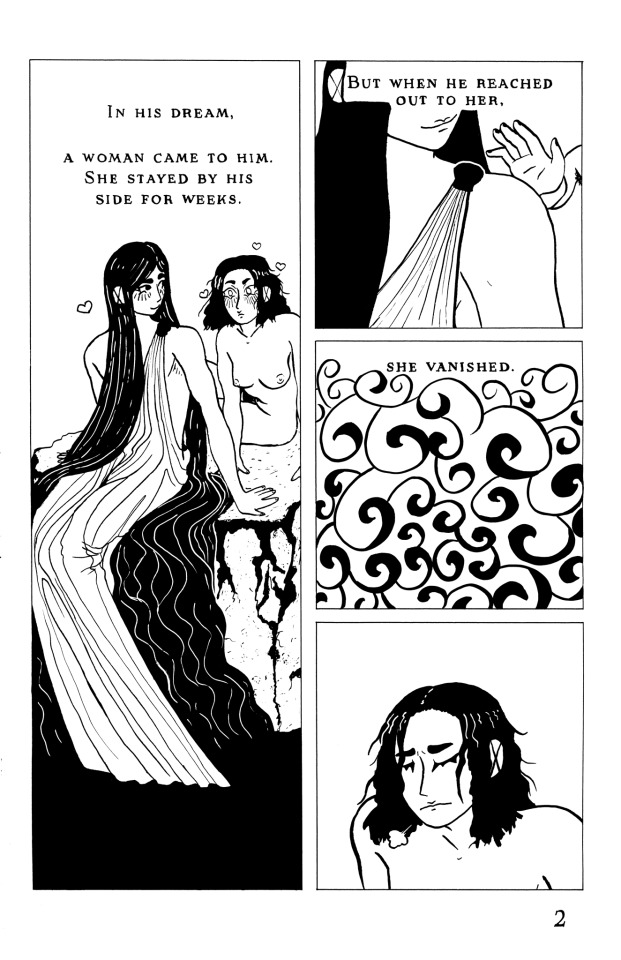

something something love knows no boundaries etc.
hey it’s been a while here’s some art
#comics#comic#black and white#comics art#comics artist#irish folklore#folklore#celtic#celtic pagan#paganism#druid#druidism#druidic#celtic folklore#pagan art#celtic art#pagan stories#celtic stories#pagan comics#celtic comics
969 notes
·
View notes
Text
sometimes The Morrigan is the Three Witches from Macbeth, sometimes She’s the Sanderson Sisters, and sometimes She’s the Kanker Sisters. you never get to pick which.
#the wolf speaks#the Morrigan#the morrigan devotion#the morrigan deity#the morrigan devotee#the morrigan worship#celtic paganism#Celtic pagan#pagan humor#witch humor#witchblr#paganblr
81 notes
·
View notes
Note
what systems of magick u fuck with?
I'm Celtic Pagan and work alongside the Horned Lord mostly, but I also occasionally work with his feminine other, the Triple Moon Goddess.
I mostly dabble in herbalism, divination, meditation/shadow work, enchantment/crafting tools (I woodwork and make staves and wands out of native driftwoods), and traditional spellcraft alongside my mother and sister. I connect with the brutal beauty of nature heavily and find the values of Lord Cernunnos to be very important to me. Witchblr would call me a green witch. My mother is an eclectic gray witch and my sister just likes to participate to eat the festival food. We have an altar by the front door of the home.
We celebrate traditional holidays and follow the Wheel of the Year:
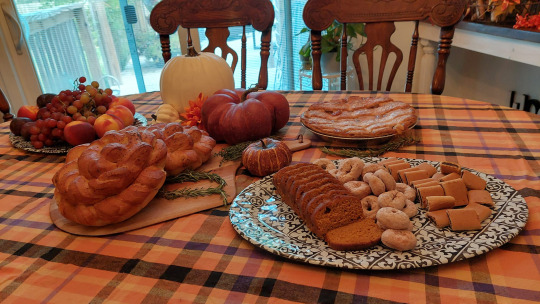
And we do spells and tarot readings after dinner:

It's a great time.
48 notes
·
View notes
Text
I don't think I really talked about it before on this blog but I'm a pagan witch.. and I have aphantasia... "Severe" aphantasia (or more appropriatly Total Aphantasia). This basically means I can't visualize at all with any internal senses. All of my daydreams, "visualizations", etc. are all just... Words that I'm thinking of, like I'm writing a story but in my mind.
This means that pretty much all the witchy pagan visualization shit is useful... And that (some) witches and pagans who don't have aphantasia or have hypophantasia (but not aphantasia) think that I'm still able to visualize... Just involuntarily. Or that I just .. not allowed to be a witch or pagan which is wild
#not a vent#just wanted to share random thing#aphantasia#witchcraft#witch#paganism#pagan witch#paganblr#hellenic pagan#pagan#kemetism#kemetic#kemetic pagan#celtic#celtic pagan#norse pagan#heathenry#pop culture paganism
23 notes
·
View notes
Text

My tribute to Epona, on the day of her namesake, Epona Day! Bountiful blessings on her feast day to you!
#horses#foal#goddess#horse goddess#celtic pagan#celtic witch#gaul#epona#epona day#festival of epona#pagan#witch#celtic mythology
390 notes
·
View notes
Text
At that point in my (closeted) pagan journey where I dedicate the most mundane tasks to the gods.
Just cooked an egg in the frying pan? That was an offering of effort, and the scraps I can't eat are to be returned to the earth as an offering of good will.
Cleaned my room? "Cleanliness is godliness" right? Why not do it as a form of offering?
Studying a new form of art to further my career? Why not dedicate it to a deity or two?
It's not about being the most fancy 24/7, it's not about stretching yourself thin, it's about finding the best ways you as an individual can connect. At least, that's how I see it.
#pagan#paganism#polytheist#polytheism#celtic paganism#celtic pagan#norse paganism#hellenic paganism#celtic polytheist#norse polytheism#hellenic polytheism
71 notes
·
View notes
Text
sometimes my devotion for the day is “I’m gonna work out for nearly two hours and really push myself in honor of The Morrigan to be a better, braver, stronger warrior for Her” and sometimes it’s “I’m gonna get this black raspberry and dark chocolate truffle ice cream for Hades because I think He’d like it” and sometimes it’s just “I’m gonna light this incense for Hermes because I’m exhausted but He deserves it” and you know what? it’s all devotion. it’s all love. it’s all worship. it’s all worthy and appreciated. nothing is too small or not enough*. doing what you can do is what matters.
*unless for some reason or another you’ve promised something specific to a deity, in which case ymmv. I’ve had situations like that where I fell through on a promise and I felt my relationship suffered, I’ve also had situations where I fell through and the only real negative was feeling like I hadn’t done enough for my own standards. in this post I’m specifically addressing scenarios in which there is no predesigned promise of devotion.
#the wolf speaks#paganblr#pagan#devotion#deity devotion#deity worship#deity work#helpol#hellenic pagan#hellenic worship#hellenic paganism#hellenic polytheism#celtic pagan#celtic paganism#celtic polytheism
60 notes
·
View notes
Text
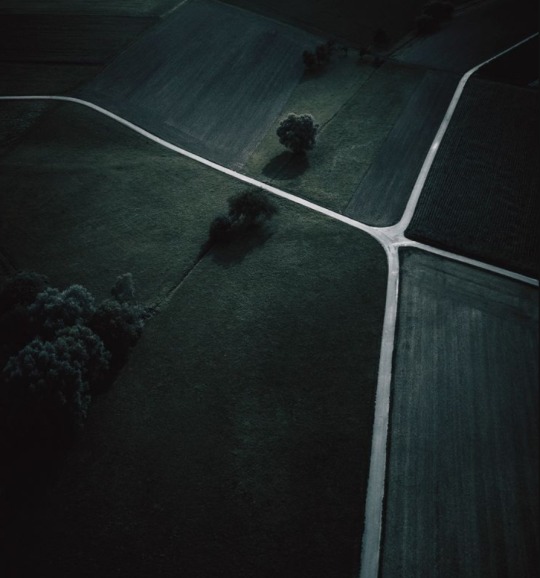

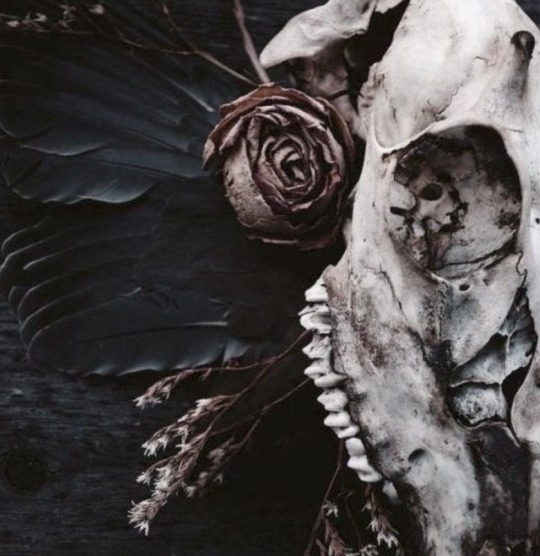
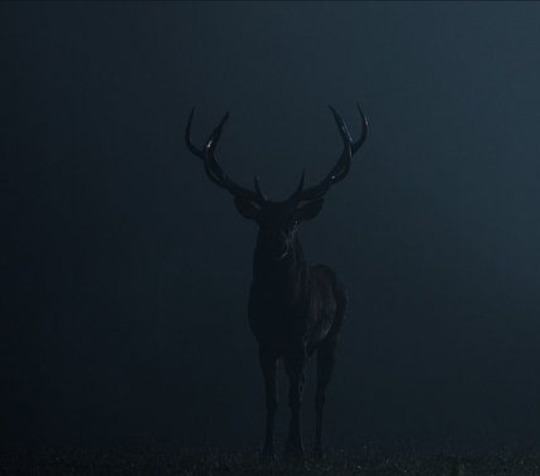

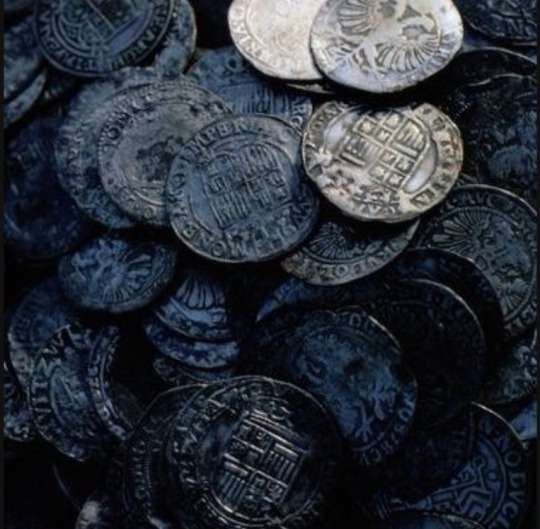
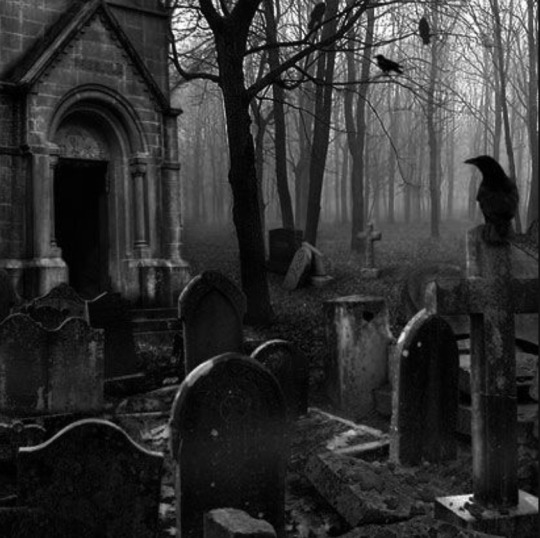
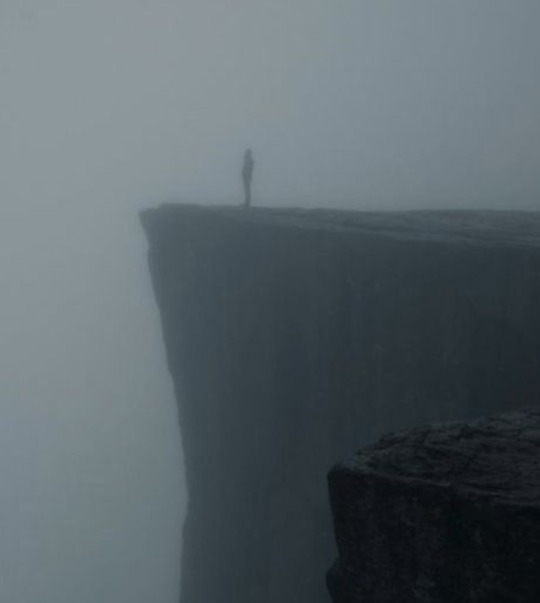
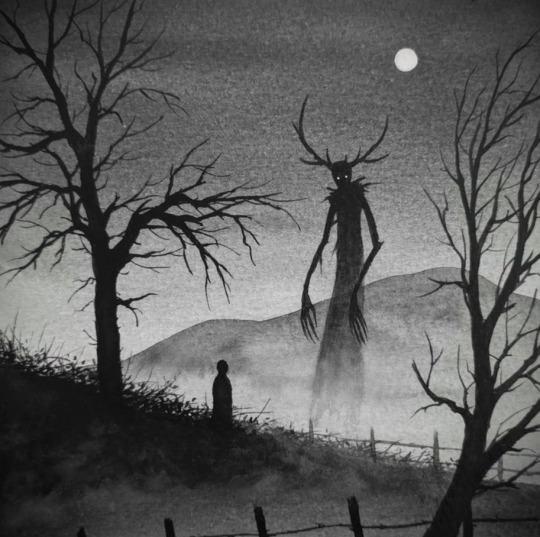
Cernunnos
Gaulish God of liminality, crossroads, death, pastoral wealth, abundance, hunters, the hunted, the wild, and the tame.
#Cernunnos#Carnonos#Karnonos#gaulish gods#gaulish paganism#gualish polytheism#gallo roman paganism#gallic gods#celtic paganism#celtic pagan#celtic pantheon#pagan#deities#polytheism#polytheist#deity#paganism#devotional moodboard#deity moodboard#the horned god#the horned one#wicca#wiccan#paganblr#chthonic#chthonic gods#godspouse#moodboard
25 notes
·
View notes
Text
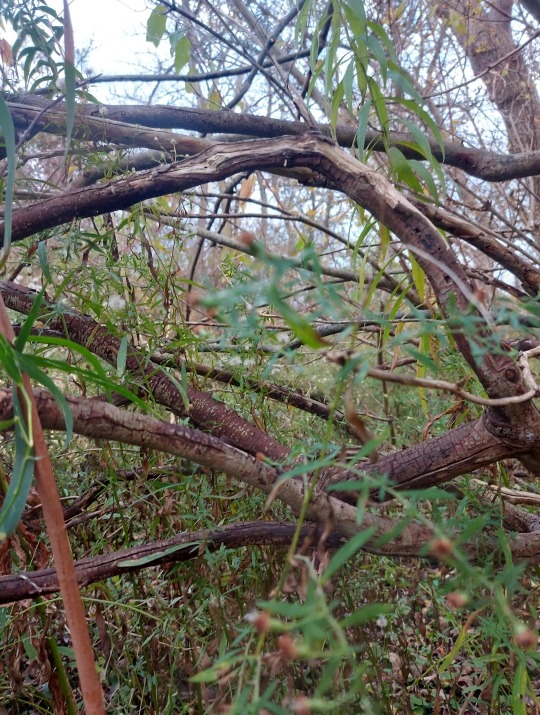
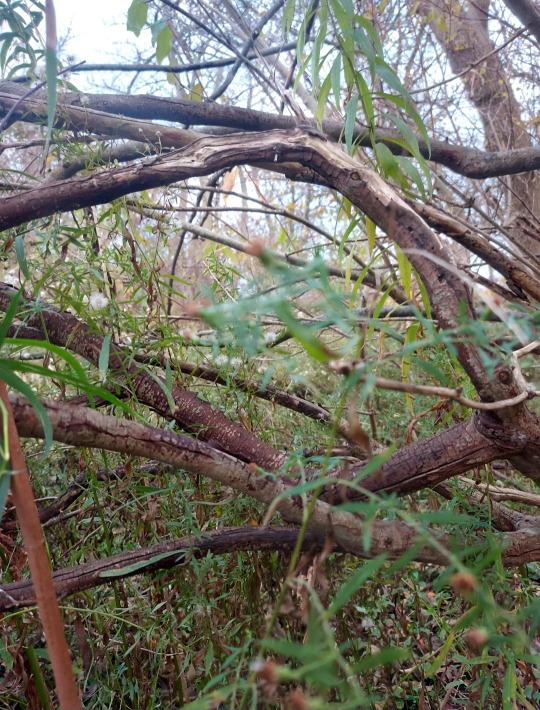
The Faery Door
In the woods behind my house
Is where I go for peace
I rest myself upon the moss
I'm perfectly at ease.
As I sit there on the earth
Surrounded by the trees
I feel the magic of the woods
Whispering on the breeze.
If I close my eyes up tight
And hold my breath real still
I hear a gentle melody
The tinkling of a bell.
When I open up my eyes
Head tilted to the sky
In the 'O' shaped bend of branches
There's fairest butterfly.
Stranger flies I ne'er saw
Than she dancing for me
Wings spun of the finest silver
Her clothing leaves of green.
She beckoned me toward her
The softest, sweetest song
I rushed myself toward the branch
Only to find her gone.
Through the Faery Door I spy
A wondrous sight to see
And hear the faintest melody
It's calling out to me.
Soft music of the forest
The leaves begin to sway
Surrounded by those dancing lights
I'll gladly spend my day.
Sitting there upon the branch
While peering through the door
My sister calls me home; I slip
Falling to forest floor.
I look back up through the branch
The magic is no more
The Faerie dancing is all done
Or visible no more.
Home I go, to break my fast
Yet never far from mind
That world beyond the Faery Door
I had to leave behind.
Everyday I find myself
Escaping to the wood
Looking, searching through that door for
Those little Neighbour's Good.
#fair folk#fairycore#the good people#the fair folk#fae folk#fae#faery#faerie#fairy door#fairy#fairy aesthetic#faerycore#otherworld#otherworldly#the veil#faeryworlds#magick#green witch#celtic pagan#pagan#faery witch#cottage core#Spotify#poetry#so i wrote a poem#take me home#fairy realm
49 notes
·
View notes